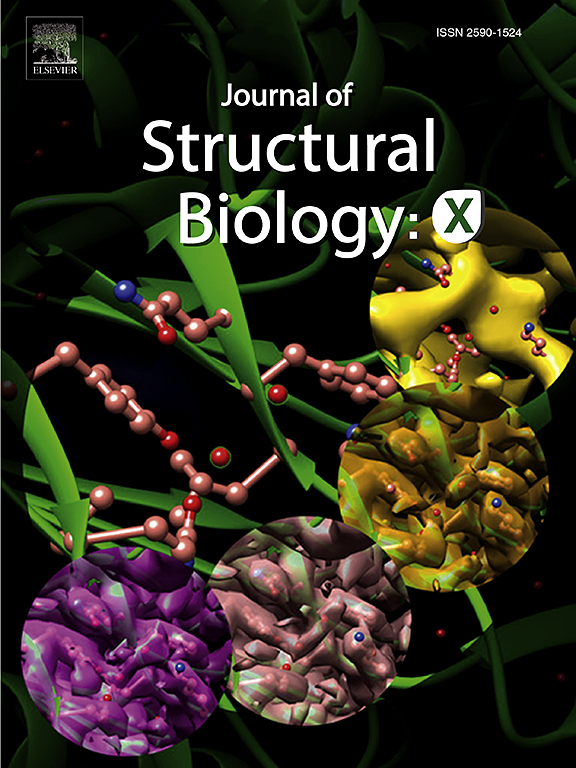The mechanism underlying fascin-mediated bundling of actin filaments unveiled by cryo-electron tomography
IF 2.7
3区 生物学
Q3 BIOCHEMISTRY & MOLECULAR BIOLOGY
引用次数: 0
Abstract
Fascins are crucial actin-binding proteins linked to carcinomas, such as cancer metastasis. Fascins crosslink unipolar actin filaments into linear and rigid parallel bundles, which play essential roles in the formation of filopodia, stereocilia and other membrane protrusions. However, the mechanism of how fascin bundles actin filaments has remained elusive. Here, we studied the organization of reconstituted fascin-actin bundles by cryo-electron tomography and determined the structure of the fascin–actin complex at 9 Å resolution by subtomogram averaging. Consistent with earlier findings, fascin molecules decorate adjacent actin filaments, positioned at regular intervals corresponding to the half-pitch of actin filaments. The fascin–actin complex structure allows us to verify the binding orientation of fascin between the two actin filaments. Fitting of the previously solved fascin crystal structure facilitates the analysis of the interaction surfaces. Our structural models serve as a blueprint to understand the detailed interactions between fascin and actins and provide new insights for the development of drugs targeting fascin proteins.

冷冻电子断层扫描揭示了肌动蛋白纤维束化的机制
筋膜蛋白是与癌症相关的重要的肌动蛋白结合蛋白,如癌症转移。束状蛋白将单极肌动蛋白丝交联成线性和刚性平行束,在丝状足、立体纤毛和其他膜突起的形成中起重要作用。然而,束蛋白如何捆绑肌动蛋白细丝的机制仍然是难以捉摸的。在这里,我们通过冷冻电子断层扫描研究了重组的肌动蛋白束的组织,并通过亚断层扫描平均以9 Å分辨率确定了肌动蛋白复合物的结构。与早期的发现一致,束状蛋白分子装饰着相邻的肌动蛋白丝,其位置与肌动蛋白丝的半间距相对应。筋膜蛋白-肌动蛋白复合物结构使我们能够验证筋膜蛋白在两种肌动蛋白丝之间的结合方向。对先前解出的束状蛋白晶体结构进行拟合,便于对相互作用面的分析。我们的结构模型可以作为了解筋膜蛋白和肌动蛋白之间详细相互作用的蓝图,并为针对筋膜蛋白的药物开发提供新的见解。
本文章由计算机程序翻译,如有差异,请以英文原文为准。
求助全文
约1分钟内获得全文
求助全文
来源期刊

Journal of structural biology
生物-生化与分子生物学
CiteScore
6.30
自引率
3.30%
发文量
88
审稿时长
65 days
期刊介绍:
Journal of Structural Biology (JSB) has an open access mirror journal, the Journal of Structural Biology: X (JSBX), sharing the same aims and scope, editorial team, submission system and rigorous peer review. Since both journals share the same editorial system, you may submit your manuscript via either journal homepage. You will be prompted during submission (and revision) to choose in which to publish your article. The editors and reviewers are not aware of the choice you made until the article has been published online. JSB and JSBX publish papers dealing with the structural analysis of living material at every level of organization by all methods that lead to an understanding of biological function in terms of molecular and supermolecular structure.
Techniques covered include:
• Light microscopy including confocal microscopy
• All types of electron microscopy
• X-ray diffraction
• Nuclear magnetic resonance
• Scanning force microscopy, scanning probe microscopy, and tunneling microscopy
• Digital image processing
• Computational insights into structure
 求助内容:
求助内容: 应助结果提醒方式:
应助结果提醒方式:


